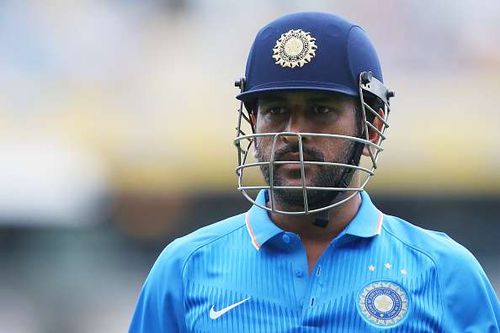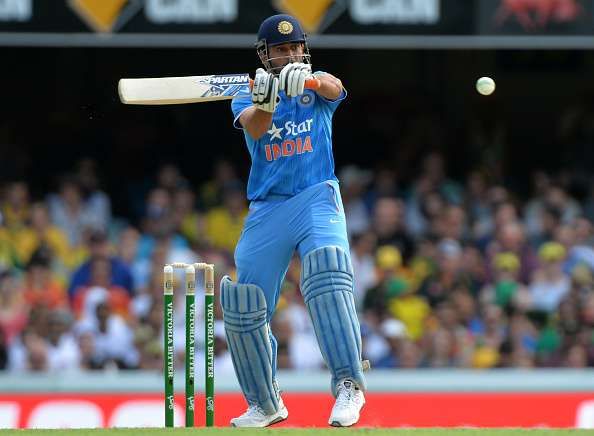
Why Indian selectors must be patient with MS Dhoni
Jharkhand gave away their best shot at winning their maiden Ranji Trophy. I have mentioned ‘gave away’ here, because, for a major part of the game, they were in command. The first innings lead was in the bag and all they had to do was not bat poorly in the second innings and salvage a draw.
As it turned out, they managed to do just that. Their mentor, and the man who would have inspired most of those men who took the field on January 4 to take up cricket as a profession, was there in the dugout, and perhaps, he would have smiled at himself.
Much like Jharkhand, who floundered in the second innings, his second innings wasn’t coming out too well. That he always found himself in precarious situations, much like Christopher Nolan’s Dark Knight, and that there weren’t many Robins around either would not have been noticed by many.
After all, nobody cared about the first innings lead once Jharkhand were bowled out in the second. Nobody cares about the situations and circumstances if the end results are not in the favour. The numbers matter, the results matter, but at times, they matter more than penance and hard work.
The focus on the ‘process’ and the ‘method’ behind the madness was emphasized upon by one other captain. He was the man MS Dhoni took the reins from in ODI cricket, and the man who has now been supplying the same chain of knowledge to the next generation.
Don't kill him yet
You can kill the man, but you cannot kill the idea he generated. But, you can kill the man, and whenever the Indian team gets picked henceforth for their limited-overs endeavours, keeping the two marquee tours to the United Kingdom in mind, death and life would have to mingle in the right proportions.
Dhoni averaged 27.80 in ODIs in 2016. He couldn’t finish off games, like he was seemingly born to do so, including the World Cup semi-final – a game that has hurt many people the most. Never before had his average fallen below 45 in ODIs, barring his debut year.
The career ODI average is in excess of 50, and to maintain such an average while batting at No. 6 is an extraordinary feat. The common perception is that batting lower down the order gives you a chance to boost that average, as there are chances you would end up unbeaten.
Scoring 20s and 30s and remaining unbeaten is one thing, and scoring consistent half-centuries and finishing off games is something completely different. Moreover, how many such players from Dhoni’s era can one name on the top of the mind who averaged as much as he did? Keep the Dhoni era aside, how many such players are there in this era?
However, all of that is legacy, and cricket matches are not won on legacies. They are won on numbers, and those numbers require performances. There was no shame when the 35-year-old openly admitted that it has become increasingly difficult for him to rotate strike lower down the order, and that he wanted to bat up the order.
India's best choice at No. 4
At the behest of calling it a tactic to keep his place in the side, what a certain section of the fans has forgotten is the fact that India do not have a stable middle order. Ajinkya Rahane’s inconsistencies in the middle-order and Shikhar Dhawan’s poor form with the bat have taken out two key elements from the team that last represented India in a World Cup.
Barring the lone match-winning century against Australia, Manish Pandey has given away most of his other opportunities. Gurkeerat Mann still hasn’t been able to translate his domestic form into international form, and Suresh Raina has either been terribly out-of-form or injured.
Call it a blessing in disguise or a thoughtful decision by a man on ‘national duty,’ Dhoni is India’s best option for the crucial No. 4 batting position, and his decline as a finisher and ascendancy as a stable middle-order batsman could not have come at a better time.
The ascendancy isn’t merely a rhetoric. Rather, there are stats to establish it. Of all batting positions where Dhoni has played more than 20 innings – at numbers 4, 5, 6, and 7 – he averages the best (58.23 from 26 innings) at No. 4. To dilute the perception that these innings were played by the Dhoni of the yore, some of his knocks at No. 4 post-2014 have been 47, 69, 47 (vs Bangladesh, 2015) and 80 (vs NZ, 2016).
Clearly, the ability to bat in the middle-order, and churn out the runs is still there. The fanaticism over him not being the finisher of the past should be swallowed with this new lease of positivity.
What this does is essentially fix the top 4 for India – in KL Rahul/Ajinkya Rahane, Rohit Sharma, Virat Kohli, and Dhoni – given they are fit, and gives the time-frame to develop a middle-order batsman for No. 5, and potentially two finishers, for No. 6 and 7, if Ravichandran Ashwin is not to be overloaded with the responsibility of being an all-rounder in all three formats.
This way, the task of blooding in the youngsters could take its natural course, without compromising on the core of Indian batting.
A keeper there has never been
Rahul Dravid was India’s first-choice wicketkeeper before Dhoni had arrived on the scene. That a top-order batsman was made to keep wickets portrayed the dearth that existed back then, in terms of men who could stand for 50 overs behind the stumps and then bat lower down the order.
Dhoni’s arrival changed all of that. Barring the new IPL trend of having make-shift keepers keep wickets, the wicket-keeping landscape has completely been transformed over the past decade or so. Fringe players like Dinesh Karthik and Parthiv Patel, who lost the battle to the Midas without even taking the field, are much-improved keepers and batsmen now.
That these domestic veterans are still pushing for a place in the side, and the fact that the wicket-keeping package now essentially comes with an ability with the bat has worked wonders for India. Players like Aditya Tare, Naman Ojha, and the latest sensation, Rishabh Pant are all capable batsmen as well.
Young cricketers are now fully aware of the fact that mere keeping isn’t enough to get them a place in any side, let alone the national side. India’s struggles with a wicketkeeper-batsman are a thing of the past now, and a large share of the credit goes to Dhoni.
As far as the man himself is concerned, he still is, with little doubt, the best wicketkeeper in limited-overs cricket. The tricks that he pulls out of his seemingly inexhaustible arsenal leave one befuddled at times.
It is quite a rarity indeed to have a 35-year-old man sprinting like a 25-year-old and have the reflexes of a 15-year-old. India have been gifted with their best wicketkeeper in several decades, and for as long as he’s there, they must cherish his presence.
Because, you will need an insane amount of luck to find a man who can average over 50 with the bat at No. 6 after having kept wickets for 50 overs. He is popularly said to have the Midas touch. However, in my humble opinion, he is the Midas himself. We must keep him close, at least until he loses his magic, and at most, well, forever.


